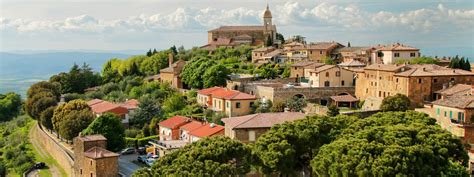Discover the charm of Tuscany’s hilltop villages with our comprehensive guide covering history, architecture, culture, local cuisine, wine, and outdoor activities.Tucked away in the heart of Italy, a treasure trove of ancient settlements perches atop rolling hills, whispering tales of a bygone era. Tuscany, a region celebrated for its vibrant history, breathtaking landscapes, and rich gastronomy, boasts a collection of hilltop villages that are truly the jewels in its crown. These captivating communities offer a glimpse into a past where time moves languidly, and beauty unfolds at every turn. Join us as we embark on a journey—through winding cobbled streets and past stone houses steeped in centuries-old secrets—to explore the enchanting hilltop villages of Tuscany. From delving into their storied past to reveling in their architectural splendors and vibrant cultural traditions, to savoring the exquisite local cuisine and diving into outdoor adventures, this blog post is your guide to the magical, elevated escapes of Italy’s rustic heartland.
Introduction to Tuscany’s Hilltop Villages
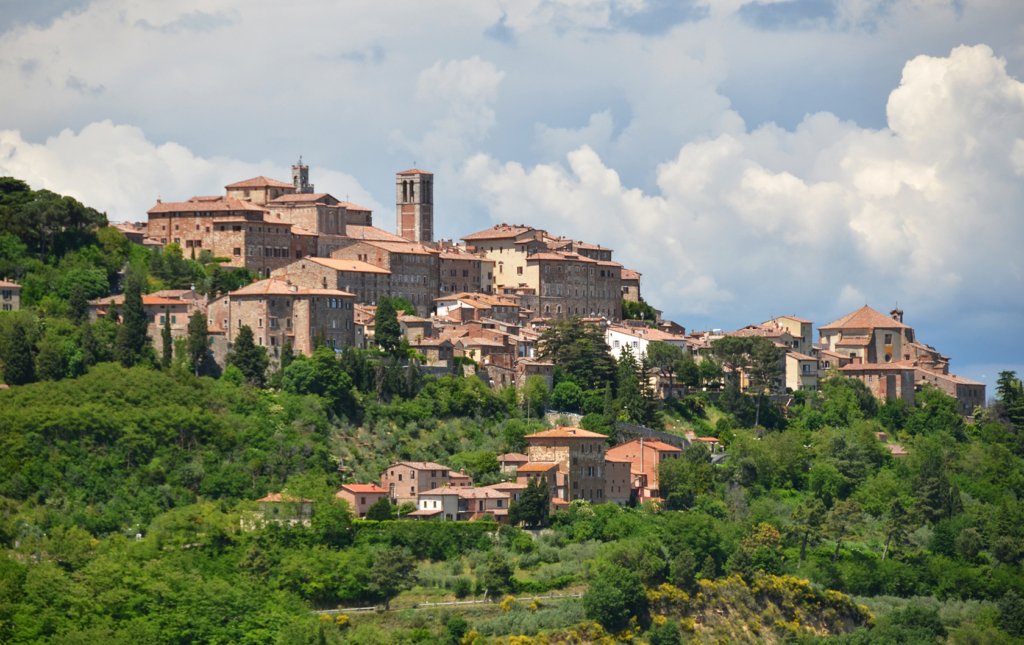
Welcome to the enchanting world of Tuscany’s hilltop villages, a delightful tapestry of ancient stone dwellings perched atop verdant rolling hills. These well-preserved medieval towns are treasure troves of art, history, and tradition, offering a glimpse into a way of life that has been meticulously maintained over the centuries. With their narrow cobblestone streets, elegant piazzas, and panoramic vistas, they invite visitors to step back in time and explore the enduring legacy of Tuscany.
The quaint charm of these villages is palpable as one traverses their serpentine pathways, each turn revealing a new vista or a hidden architectural marvel. The sun-kissed walls of the old houses, adorned with pots of vibrant flowers, create a picturesque scene of rustic beauty, unparalleled anywhere else in the world. The villages exude a sense of tranquillity and timelessness, offering a serene escape from the hustle and bustle of modern life, allowing one to unwind amidst histories written in the very stones that pave their ancient thoroughfares.
Though each village boasts its own unique identity, all of them share a common heritage; a testament to the rich cultural tapestry that is inherently Tuscan. From the Etruscans to the Romans, and through the tumultuous Middle Ages, each epoch has left an indelible mark on the landscape and culture of these hilltop sanctuaries. It is this layered historical background, coupled with the idyllic setting, that beckons history buffs, romantics, and adventurers alike to explore and cherish these gems of Tuscany.
Beyond their historical allure, these villages are also a gateway to discovering the incredible culinary delights and world-renowned wines that the region is famous for. Local trattorias offering traditional Tuscan fare, wine tasting tours in age-old vineyards, and the chance to participate in local festivities, ensure that a visit to these hilltop villages is not merely a journey through time, but a feast for the senses as well. Embark on this splendid journey to Tuscany’s hilltop villages, and be prepared to fall in love with the heart and soul of Italy.
Historical Background of Tuscany’s Hilltop Villages
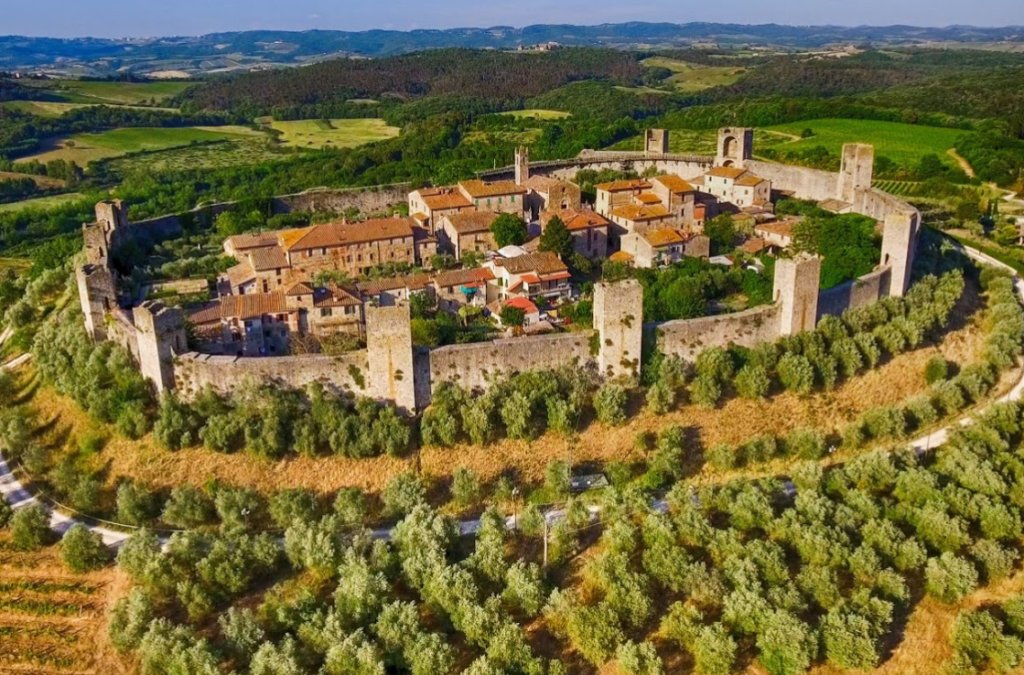
Delving into the historical background of Tuscany’s hilltop villages transports you to a time when these bastions of civilization bore witness to incessant conflicts and burgeoning cultures. Perched atop strategic elevations, these villages were originally designed as formidable strongholds during the tumultuous Middle Ages, providing sanctuary and defense against both foreign invaders and feuding local lords. The warrens of stone houses, narrow lanes, and central piazzas were often encircled by massive defensive walls, which remarkably have withstood the test of time and still impart a sense of awe to any visitor with their storied past.
The inception of many of these villages can be traced back to the Etruscans, an ancient civilization predating the Romans, who understood the tactical advantage of such lofty settlements. As time marched forward, the Romans and subsequently the Lombards left their imprint, but it was during the era of city-states and the rise of the Medicis that these villages truly flourished. The Renaissance brought a wave of prosperity and a renewed focus on arts and knowledge that trickled even into the remote reaches of these elevated communities, evident from the ornate frescoes and sculptural works that adorn some of their churches and public buildings.
Following the Renaissance, the Tuscan hilltop villages witnessed periods of decline and resurgence, reflecting the broader historical tides of Italy. The unification of Italy in the 19th century injected new life into these hamlets, sparking a renaissance of cultural identity and pride. In contemporary times, these villages, once ensconced in isolation, have become celebrated jewels within Tuscany’s crown, attracting historians, artists, and travelers who are lured by the stories and remnants of bygone eras that still pulse through the stony arteries of these medieval settlements.
Beyond mere relics of heritage, these hilltop villages are living museums, where daily life unfolds amidst a backdrop steeped in ages of history. Their relative seclusion has helped preserve unique traditions and languages that might have otherwise been lost to globalization. Today, as the world moves rapidly into the digital age, Tuscany’s hilltop villages stand as a palpable testament to human ingenuity and the enduring march of civilizations—a testament written into every cobblestone, every archway, and every panoramic vista that has been the silent spectator to thousands of years of human history.
Architectural Gems: Unique Features of Tuscany’s Hilltop Villages

The rolling hills of Tuscany are dotted with myriad hilltop villages, each boasting a rich tapestry of architectural styles that mirror the diverse historical influences that have swept through the region. Venturing into these bastions of culture, one can observe the fusion of Etruscan, Romanesque, and Renaissance architectural elements that collectively shape an authentic Tuscan aesthetic. In essence, these villages serve not merely as settlements but as custodians of a historical narrative etched into every stone and facade.
Among these architectural marvels, the medieval fortifications and ancient walls stand out, as they seamlessly blend with the natural contours of the hilltops, offering not only protection in bygone eras but also a stunning spectacle for the contemporary eye. The narrow cobbled streets, lined with stone houses adorned with terracotta roofs, guide visitors through a labyrinthine journey back in time to an era when these structures were the backdrop of daily life in Tuscany’s storied landscape.
Highly notable within these villages are the public squares, or piazze, which act as open-air venues of communal interaction and civic life, often punctuated by an iconic fountain or an imposing church facade. These piazze, with their palpable sense of historic community, are flanked by palazzos and archways that whisper tales of their illustrious past, serving as silent witnesses to centuries of conversations, market activities, and public gatherings that are the heartbeat of Tuscan culture.
The spiritual heritage of Tuscany’s hilltop villages is also encapsulated in their remarkable churches and chapels, featuring intricate frescoes and impressive stonework that showcase the high points of religious architecture during various periods. Often positioned with a commanding view of the surrounding valleys, these ecclesiastical buildings are not just places of worship but also repositories of art and history, capturing the devotion and artistic expression of generations of Tuscan inhabitants.
Cultural Traditions and Festivals in Tuscany’s Hilltop Villages
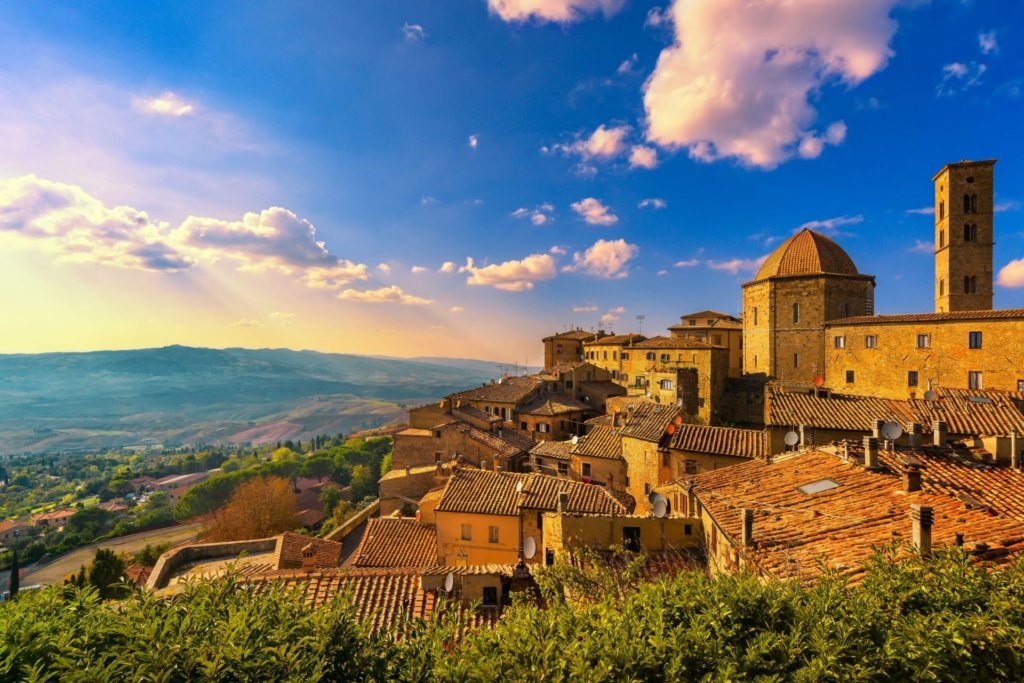
Travelers who venture into the heart of Italy are often captivated by the cultural traditions and festivals that imbue Tuscany’s hilltop villages with a sense of timelessness and authenticity. It is here, amidst the rolling hills and verdant landscapes, where one can truly immerse in the vibrant tapestry of Italian cultural heritage, witnessing celebrations that have been passed down through generations with reverence and passion. Each festival is a kaleidoscope of color, emotion, and communal spirit, reflecting the deep-rooted values and historical narratives unique to this enchanting region.
The Festival of the Thrush, known locally as the Sagra del Tordo, is one such event that takes place in the fall in the medieval town of Montalcino. It features archery contests, medieval parades, and banquet feasts, providing a window into the historical pageantry of Tuscany. Participants don elaborate costumes evoking the Middle Ages, and the air is filled with the sound of trumpets, the cheers of the crowd, and the aroma of traditional dishes being prepared as forefathers once did. This festival not only entertains but also preserves and perpetuates the storied narrative of the region’s past.
Equally enchanting is the Carnevale of Viareggio, one of Italy’s most spectacular carnival celebrations, where artistry and craftsmanship converge in the form of elaborate floats and masquerade parades. For weeks, the streets come alive with music, dance, and satirical performances, attracting visitors from around the globe. The intricate papier-mâché creations, which can take months to construct, are a testament to the dedication of the local artisans and an echo of the creative spirit that has long thrived amongst Tuscany’s undulating landscapes.
The Palio, held in the historic piazza of Siena, is yet another highlight of the region’s festive calendar. This intense horse race dates back centuries and is a profound expression of the local community identity. Each of Siena’s districts, or contrade, fiercely competes in a dramatic display of horsemanship and neighborhood pride. The Palio is not merely a sporting event; it is a ritual that consecrates the enduring connection between the Sienese people and their cherished city, punctuated by a series of religious, civic, and celebratory events that create an exhilarating atmosphere throughout the city.
Exploring the Local Cuisine and Wine in Tuscany’s Hilltop Villages
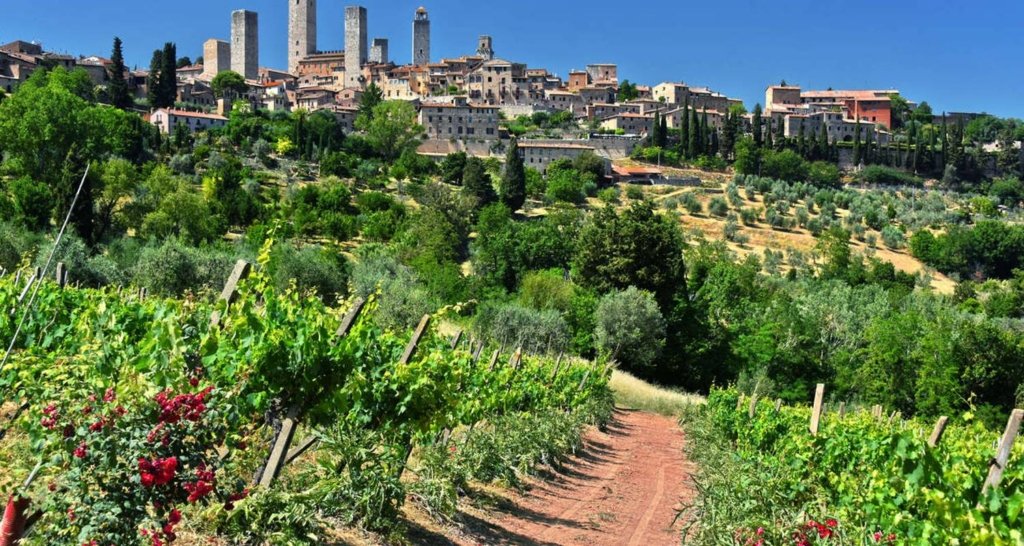
When one embarks upon a gastronomic journey through the Tuscany’s Hilltop Villages, they are not simply indulging in a feast for the palate, but are also immersing themselves in centuries-old traditions, where every dish tells a story of the land and the hands that cultivated it. Renowned for their robust flavors and simplistic elegance, the local cuisine of Tuscany is a reflection of the region’s rich agricultural heritage, where the emphasis is placed on fresh, high-quality ingredients grown on the surrounding sun-kissed hills and fertile valleys.
Feasting in Tuscany’s Hilltop Villages offers an intimate experience with the region’s heart and soul, where the local wines play a pivotal role in both the cultural tapestry and the culinary delight of visitors and connoisseurs alike. Each sip of a well-bodied Chianti or a delicate Vernaccia di San Gimignano is not just a taste sensation but a voyage through history, as these wines have been cherished and perfected over millennia, a testament to the Tuscan’s enduring passion for viticulture.
The cuisine of the hilltop villages in Tuscany is characterized by its simplicity and integrity to original flavors, where staples such as wild boar, truffles, and pecorino cheese are transformed into exquisite courses that are both earthy and refined. The reverence for traditional cooking methods is palpable in each dish, whether it’s the slow-stewed pappa al pomodoro or the exquisitely grilled bistecca alla fiorentina, each recipe is steeped in history and local savoir-faire.
To truly appreciate the local cuisine and wine of Tuscany’s Hilltop Villages, one must immerse themselves fully, not just in the tastes but in the rhythms of the village life — the bustling markets, the conviviality of the taverns, and the seasonal festivals that celebrate the bounties of the land. It is in these authentic experiences that the traveler comes to understand that here, food and wine are not just sustenance, but joyous expressions of the Tuscan spirit and the bountiful gifts of the earth.
Activities and Outdoor Adventures in Tuscany’s Hilltop Villages

Delving into Tuscany’s hilltop villages, not only does one encounter the serene beauty of the rolling landscapes, but also an array of activities and outdoor adventures that beckon the traveler seeking an authentic Italian experience. For those with a penchant for the exhilarating thrill of exploration, these historical hamlets offer more than just picturesque views; they’re gateways to immersive outdoor pursuits, intertwined with the unique flavor of rural Tuscan life.
Imagine setting out at the crack of dawn, with the golden Tuscan sun ascending above the undulating hills, to take part in an invigorating hiking expedition across the rugged countryside. Here, every step unveils a new vista, a fresh perspective on the ancient villages perched atop the crests, with the winding trails whispering stories of yore. Hikers and nature enthusiasts often find solace in the sprawling network of paths that not only connect these medieval settlements but also offer encounters with the region’s diverse flora and fauna.
For the adventurers at heart, the hilltop villages serve as perfect launching pads for cycling tours along the rustic roads carved through olive groves and vineyards. Cyclists can revel in the challenge of steep inclines, rewarded by the exhilarating descents that follow, all while absorbing the vibrant cultural tapestry that envelops them. The sense of freedom one feels while pedaling through Tuscany’s countryside, with the wind rushing past and the scent of wild herbs in the air, is, without doubt, an experience etched in memory long after the journey ends.
Moreover, many of Tuscany’s villages are famed for their proximity to horse riding facilities, offering an equally enchanting means to traverse the scenic landscapes. From the leisurely-paced treks suitable for beginners to the more spirited gallops for the experienced rider, horseback riding in Tuscany offers a deeply personal connection to the land and its heritage. As riders thread their way through hidden trails and open fields, they forge a timeless bond with the same land that has nurtured countless generations before them.
Frequently Asked Questions
What makes Tuscany’s hilltop villages so special among Italy’s numerous attractions?
Tuscany’s hilltop villages are enchanting due to their stunning panoramic views, historical charm, and the perfectly preserved medieval architecture that transports visitors back in time, offering a unique and authentic Italian experience.
Can you share some historical background that highlights the significance of Tuscany’s hilltop villages?
Certainly! Tuscany’s hilltop villages often date back to Etruscan or Roman times and have played a pivotal role in local history as strategic defense points. Over the centuries, they have been sites of battles, political power struggles, and flourishing trade, each one contributing to Tuscany’s rich cultural tapestry.
What are some architectural features that distinguish Tuscany’s hilltop villages from other regions?
Tuscany’s hilltop villages boast characteristic stone buildings, narrow winding streets, fortified walls, and gateways. The use of local materials and the integration of the villages into the landscape with terraced gardens and vineyards are a testament to the skill and ingenuity of the local craftsmen and the timeless nature of Tuscan architecture.
Could you mention a couple of cultural traditions or festivals that visitors should not miss in Tuscany’s hilltop villages?
Visitors should look out for the colorful Palio horse race in Siena and the medieval festivals that bring history to life, complete with costumes, markets, and traditional crafts. These cultural events provide a fascinating glimpse into the local heritage and are an integral part of the region’s charm.
What local dishes and wines should foodies seek out when visiting the hilltop villages of Tuscany?
Gastronomes must try classic Tuscan dishes like ribollita, pappa al pomodoro, and wild boar ragù. Wine connoisseurs will appreciate the world-renowned Chianti and Brunello di Montalcino, which are produced in the region’s rolling vineyards and perfectly complement the local cuisine.
What kind of activities can visitors engage in when exploring the outdoor adventures that Tuscany’s hilltop villages have to offer?
Outdoor enthusiasts can enjoy hiking along the picturesque trails, cycling through the scenic countryside, or even hot-air ballooning for an unforgettable view of the landscape. Each village offers a unique set of adventures that cater to the thrill-seekers and nature-lovers alike.
How difficult is it to access these hilltop villages, and what’s the best way to explore them?
Many of Tuscany’s hilltop villages are accessible by car, although some roads may be steep and narrow. For an immersive experience, it’s best to explore on foot or by bicycle, allowing you to take in the breathtaking views and charming details at a leisurely pace.
